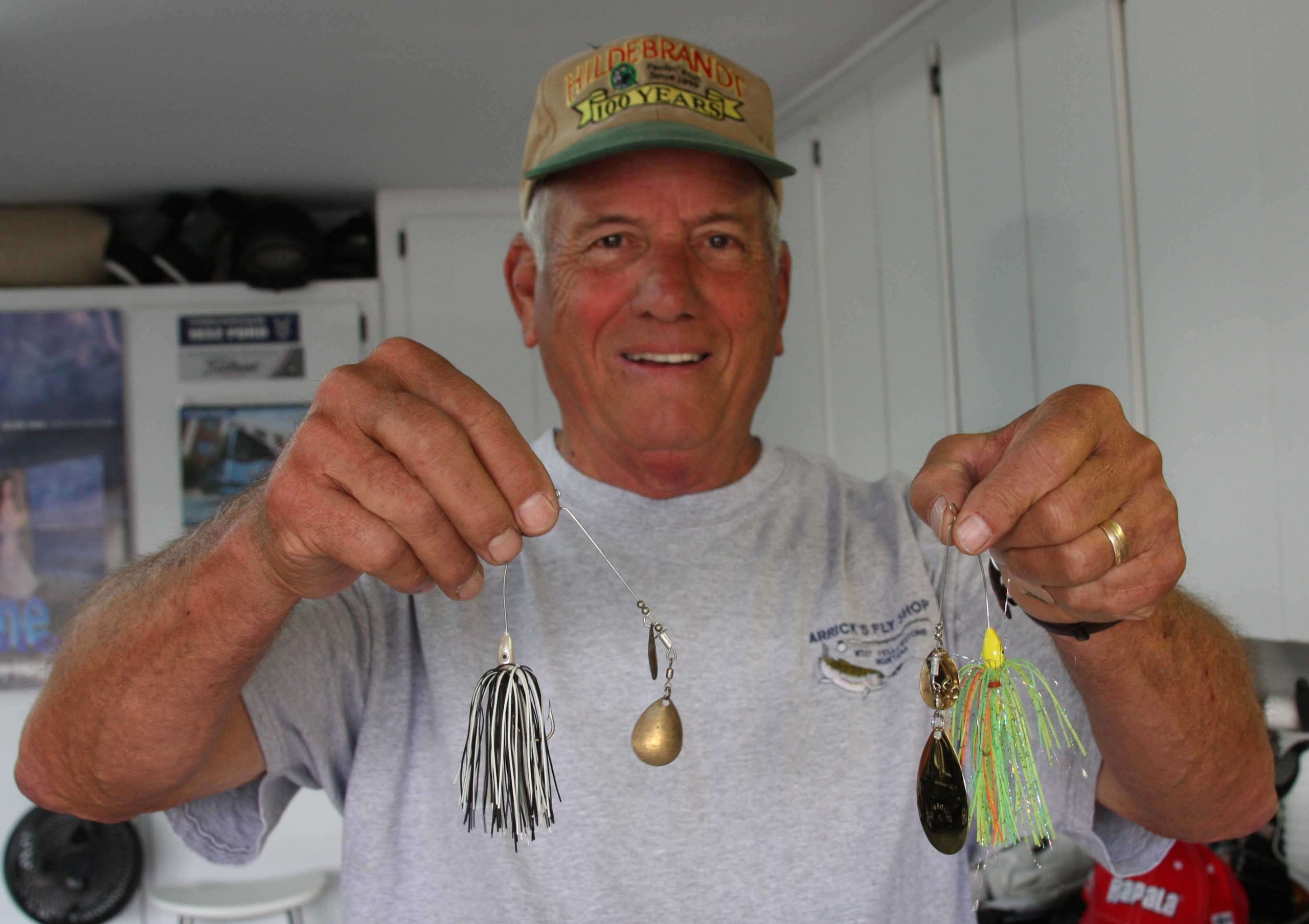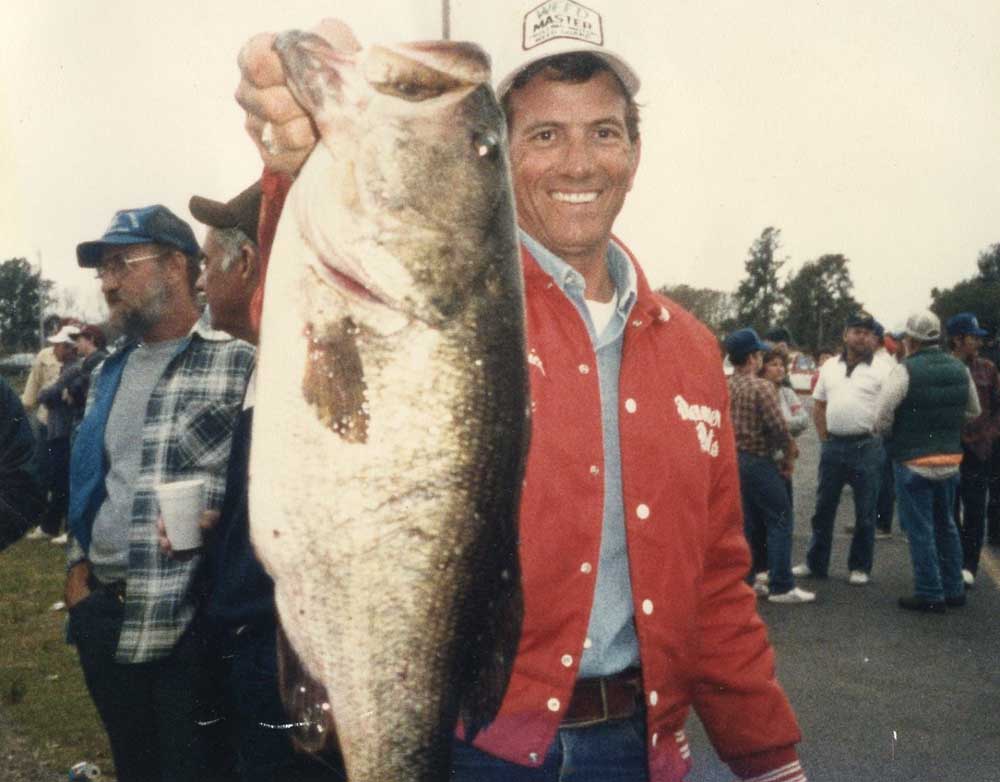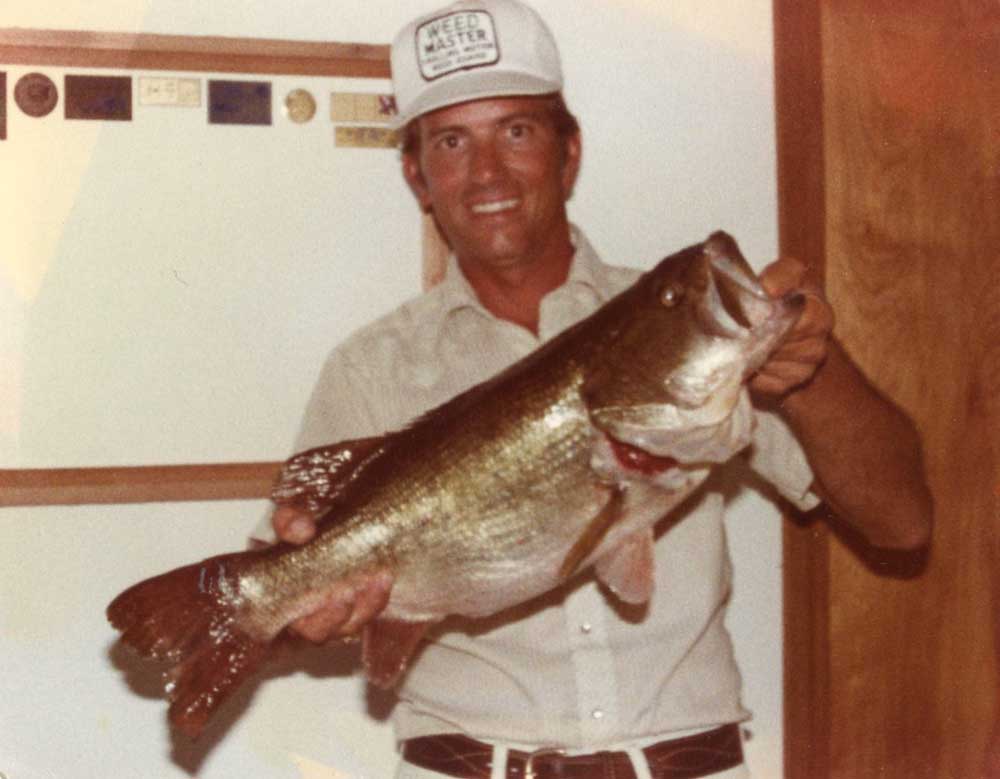
When a new trend grips the bass fishing world, it’s often tough to trace it back to its origins. We know Dee Thomas invented flippin’, but who started pitchin’? We know Paul Elias made kneeling and reeling famous, but he doesn’t take credit for starting the method. When it comes to big-bladed spinnerbaits, however, we look back to Steve Porter of Okeechobee, Fla.
In the early 1970s, Porter, who lives just behind the levee on Lake Okeechobee, was a devoted spinnerbait angler. He caught plenty of bass on the Big O using bladed baits, but relatively few lunkers. He felt the blades on conventional spinnerbaits were too small for the job. They did a poor job of mimicking the big golden shiners in Okeechobee — baitfish that often reach 10 inches or more in length.
“I met Alan Hildebrandt of the Hildebrandt company in 1972 and tried to talk him into getting me some really big spinner blades — sizes 6, 7 and 8 — but Alan kept telling me that he wasn’t in the blade business; he was in the spinnerbait business,” Porter recalled. “So I was surprised when I got a big box full of blades from Hildebrandt a year or so later. Without their help, it might have been decades before someone else gave my theory a real chance. Hildebrandt even came out with their own version, the ‘Tin Roller’ a few years later. It’s a spinnerbait that my friend Bernie Schultz [Elite Series pro and Bassmaster.com columnist] designed, and it’s still on the market.”
Once Porter had the tools to test his theory, he started experimenting with larger blades and immediately had success.

“I started fishing with the big blades in 1974, but all I had was Indiana style blades,” Porter explained. “It wasn’t until much later that I got any big willowleaf blades. I was using a Bagley Switchblade spinnerbait frame and putting a No. 6 or 7 Indiana blade behind a No. 3 or 3 1/2 Colorado blade. The best body was the 5/16-ounce size. You needed the big frame to handle the large blade, and Bagley’s Switchblade allowed you to change blades out quickly and easily.
“As soon as I started throwing the big blade, it was lights out,” Porter says. “I started catching lots of big bass because the bigger blade did a better job of emulating the baitfish we have down here — golden shiners.”
Eventually, Porter settled on a No. 3 1/2 Colorado blade in front and a No. 7 willowleaf in back for most of his Florida fishing. He likes gold blades to copy the flash of a golden shiner. His best bass on the big blade weighed 11 pounds, 1 ounce and anchored a tournament winning catch.
For the rest of the county, Porter recommends scaling back a little. He likes a No. 6 blade (gold) in back and a No. 3 or 3 1/2 Colorado (silver) in front. If he’s fishing an area that’s known for giant bass, he might bump the trailing blade up to a No. 7 or 8.
When fishing the big blade, Porter has some advice that should result in more and bigger bass for you.

“In relatively open water — when the cover is below the surface like submerged vegetation — I start by making a very long cast,” he says. “Big bass can be skittish. The farther you can stay away from them, the better. I start my rod tip high, to keep the bait up, and drop the tip as the bait gets closer to me. I like it to run eight inches to a foot deep; I don’t want the bait to ‘wake’ the surface.
“If I’m in heavy cover, I make shorter, more precise casts and guide the bait through and around any ambush points.”
Porter is adamant about not using a trailer hook. He says when bass hit the big bladed spinnerbait, they’ve got it and that a trailer hook is unnecessary. He also tends to stay away from soft plastic trailers, preferring trailers that are built into the skirt — longer strands that offer a little extra action.
If there’s a best time to go to the big blade, Porter believes it’s when you have submergent vegetation and some wind to break up a calm water surface. “It tends to make the bass more aggressive,” he says. “They’ll chase and attack the bait really well then.”
For more history on the Okeechobee Big-Blade spinnerbait, check out Bernie Schultz’s “Pro-spective” column, “Setting the Record Straight.”





